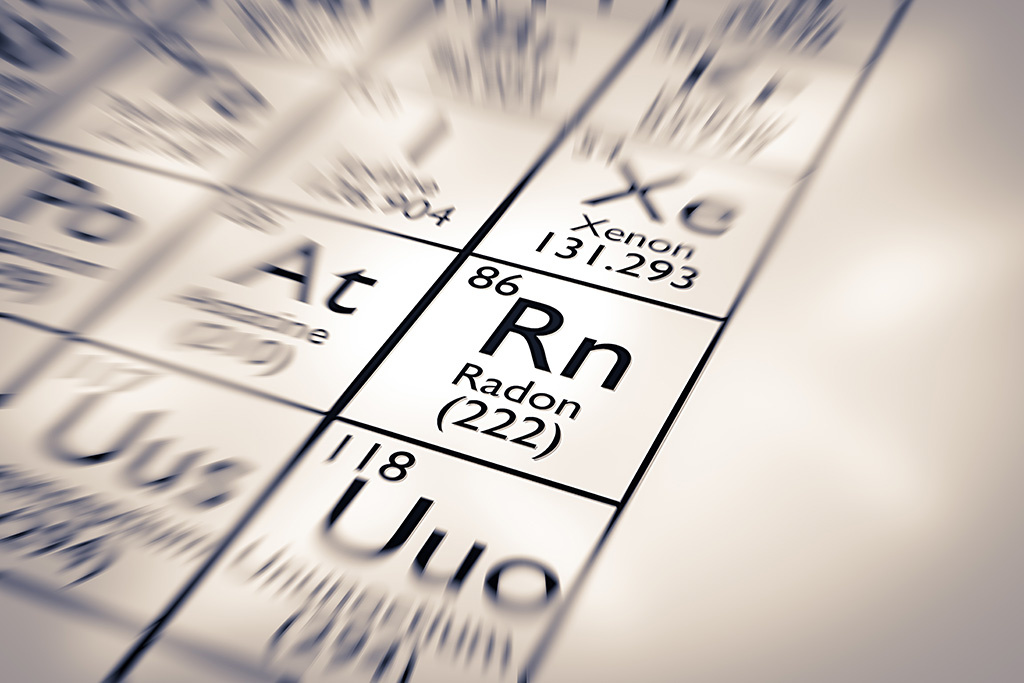27th February 2020

Radon is a naturally occurring radioactive gas. It is formed by the radioactive decay of small amounts of uranium that occurs in all rocks and soil [1]. The decaying process results in small particles of radon entering the atmosphere. Known as the ‘silent killer’, radon can also be present in water.
It is important to test your home or business for radon gas as this is the best way to ascertain the level of risk posed from the gas, if it is present. Once the risk is known, procedures can be put into place so that the risk can then be minimised to protect the health of your family and employees.
Radon is the second leading cause of lung cancer in the UK. [2] With exposure causing 21,000 lung cancer-related deaths per year. The only thing that causes more deaths as a result of lung cancer is smoking. The risk of contracting lung cancer from radon gas is also increased in smokers, placing them at an even higher risk when exposed to this deadly gas. There have also been studies carried out which suggest that Radon gas exposure may be linked to other forms of cancer, such as childhood leukaemia.
Radon gas is invisible and cannot be detected by smell or taste. This is why it is so important to undertake a radon test if you live in an area where the level of radon is what is known as ‘above the action level’. Most people believe that they do not live in a region that is affected by radon gas, but this may not be the case.
How does Radon Gas get into my home?
Radon gas occurs due to the effects of wind and temperature when the air pressure in buildings becomes lower than the air pressure in the soil beneath them. This causes gas from the soil to enter a building through any cracks and gaps present in the floor or walls. If there is radon gas present and in areas where radon levels in the soil are high, indoor radon levels can rise above the action level [3]. This means that these are potentially causing harm to inhabitants of that building. Intoxication levels are increased inside buildings as levels of the gas build up and cannot escape. Good ventilation and airflow can help reduce the risks posed from radon.
How can I check for radon?
Radon is present in most of the West Country but is also found in high quantities in parts of Yorkshire and the North Pennines [4]. The test for Radon is relatively simple and inexpensive, taking between seven days and three months, costing around £40 and the size is of the detector is not dissimilar to a carbon monoxide sensor.
The longer period you test for the more accurate the result given radon builds up over time and weather conditions may affect the result (i.e. if it is particularly windy). If time is short the seven-day test should at least give you an indication of the levels of radon.
Often the issue of radon will only come to light when a property is sold as this is when an environmental search is carried out by solicitors instructed to handle the purchase. If the property is in a radon risk area your solicitor should contact you to discuss next steps and ensure it is safe before purchasing. If radon gas is discovered, you may be able to negotiate a lower purchase price to cover the costs of remedial works or request that the seller carries out these works before the transaction completes.
How can I reduce radon?
Remedial methods:
There are some simple actions which can help to reduce radon levels, such as, sealing around loft hatches and any large openings in the floors. The following are also useful remedies:
-
Radon sump:
An active radon sump which is fitted with a fan is the most effective way to reduce radon levels indoors. Sumps work by being placed under solid floors. There are 2 types:
-
Active;
-
Passive.
Active sumps are the most effective and are powered by an electric fan, this will reduce even the highest level of radon. Passive sumps do not include a fan and are less effective. They work by placing a pipe ending above the eaves of a roof. The typical cost for this system can range from £800-£2,000 and usually takes 2 days to install.
-
Positive ventilation:
Positive ventilation systems work best in well-insulated, draught free homes. The system will consist of a fan in the roof space connected to a vent in the ceiling. The typical cost ranges from £500-£1,000 and usually takes less than a day to install.
-
Active under-floor ventilation:
Many houses will contain natural under-floor ventilation but, in some cases, this may be inadequate depending on the levels of radon. If this is the case, active under-floor ventilation can be installed, which uses a fan to either continuously blow air into or extract air from the under-floor space. The typical cost for this ranges from £700-£1,500 and generally takes less than a day to install.
If you are looking to buy or sell a property BHP Law has a team of expert lawyers on hand to assist and advise you both including residential, commercial and agricultural property teams.
This article was written by Emily Crick and Sara Khan from our commercial and agricultural property team.

